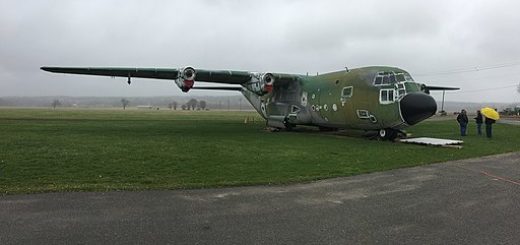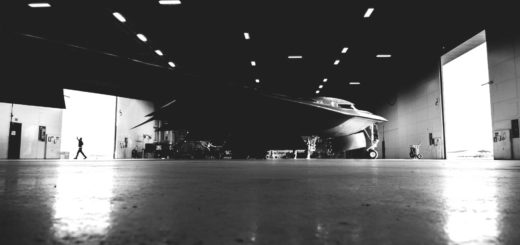US Air Force B-1B Lancer bombers fly near Venezuela testing Caracas defenses
{loadposition bannertop}
{loadposition sidebarpub}
Two U.S. Air Force B-1B Lancers flew along the Caribbean to waters off Venezuela on October 24, remaining in international airspace after departing Dyess Air Force Base. The flight follows a B-52 and Marine F-35B “bomber attack demonstration,” reinforcing a denser U.S. posture around Puerto Rico and the southern Caribbean.
Two B-1B Lancer bombers conducted a training mission to the Venezuelan littoral on Thursday, a move U.S. officials cast as routine but that arrives amid an uncommon concentration of American air and naval power in the region. The aircraft launched from Dyess Air Force Base in Texas and stayed in international airspace, according to reporting based on flight tracking and a U.S. official, while the Pentagon in recent days showcased a separate “bomber attack demonstration” with B-52s escorted by Marine Corps F-35Bs.Follow Army Recognition on Google News at this link
The B-1B heavy conventional bomber provides a combination of payload, speed, and flexibility suited to a contested littoral theater (Picture source: US DoD)
In the area, the U.S. presence consists of an amphibious group, destroyers, a submarine, and regular air patrols. F-35Bs operate from Puerto Rico, P-8A Poseidons monitor maritime approaches, and MQ-9 Reapers provide persistent intelligence collection. This concentration of air and naval assets maintains political-military pressure on Nicolás Maduro’s government while leaving multiple options open: limited standoff strikes, discrete special operations launched from sea-based platforms, or an intensified campaign of maritime interdiction.
In capability terms, the B-1B heavy conventional bomber provides a combination of payload, speed, and flexibility suited to a contested littoral theater. Powered by four General Electric F101-GE-102 afterburning turbofans, it reaches roughly Mach 1.2 at low altitude and carries up to 34,019 kg of munitions internally. Typical loads include salvos of Joint Air-to-Surface Standoff Missiles (JASSM), Joint Direct Attack Munitions (JDAM), Wind-Corrected Munitions Dispensers (WCMD), and, if required, Quickstrike naval mines. The synthetic aperture radar (SAR) supports high-resolution mapping, terrain following, and moving-target tracking, while GPS/INS navigation enables all-weather precision. Fully Integrated Data Link (FIDL) and Link 16 connectivity ensure integration into command-and-control networks.
The wider architecture forms a continuous sensor-to-effects web. F-35Bs equipped with the AN/APG-81 active electronically scanned array (AESA) contribute long-range detection, electromagnetic collection, and multi-domain cueing. P-8A Poseidons with the AN/APY-10 build an extended surface picture, and MQ-9s sustain Intelligence, Surveillance, and Reconnaissance (ISR) endurance. Together, they feed a Recognized Maritime Picture (RMP) and a Common Operational Picture (COP), distributed to bombers and surface combatants via FIDL and Link 16, under Emissions Control (EMCON) when required.
On the other side, Venezuelan forces display denial tools without altering the balance. Igla-S man-portable air-defense systems (MANPADS) are dispersed across the country, and Su-30MK2s field Kh-31 supersonic anti-ship missiles. These systems expand risk for platforms nearing surface-to-air missile (SAM) envelopes or the coast, yet they do not offset U.S. qualitative advantages.
In the Venezuelan context, the B-1B allows the United States to engage clandestine airstrips, depots, radars, and command-and-control nodes from outside defensive bubbles, while supporting maritime interdiction through offensive mining if necessary. Its payload enables coordinated salvos against dispersed, time-sensitive targets, shortening the interval from detection to effect without requiring a tanker stack close to shore.
Statements by President Trump emphasize counter-drug objectives while denying an intention to force regime change, yet assertions of legal authority for strikes and the steady arrival of additional assets increase regional unease. A shift from maritime interdiction to land strikes would raise the risk of miscalculation with Venezuelan air defenses and the chance of incidents involving neighboring states. Diplomatic costs would likely grow given regional skepticism toward cross-border use of force. The B-1 transit is therefore not an isolated out-and-back flight but part of a broader campaign whose evolution tests allied interoperability, regional crisis management, and the ability of all actors to avoid a spiral that could reshape security assumptions in the Caribbean.

{loadposition bannertop}
{loadposition sidebarpub}
Two U.S. Air Force B-1B Lancers flew along the Caribbean to waters off Venezuela on October 24, remaining in international airspace after departing Dyess Air Force Base. The flight follows a B-52 and Marine F-35B “bomber attack demonstration,” reinforcing a denser U.S. posture around Puerto Rico and the southern Caribbean.
Two B-1B Lancer bombers conducted a training mission to the Venezuelan littoral on Thursday, a move U.S. officials cast as routine but that arrives amid an uncommon concentration of American air and naval power in the region. The aircraft launched from Dyess Air Force Base in Texas and stayed in international airspace, according to reporting based on flight tracking and a U.S. official, while the Pentagon in recent days showcased a separate “bomber attack demonstration” with B-52s escorted by Marine Corps F-35Bs.
Follow Army Recognition on Google News at this link
The B-1B heavy conventional bomber provides a combination of payload, speed, and flexibility suited to a contested littoral theater (Picture source: US DoD)
In the area, the U.S. presence consists of an amphibious group, destroyers, a submarine, and regular air patrols. F-35Bs operate from Puerto Rico, P-8A Poseidons monitor maritime approaches, and MQ-9 Reapers provide persistent intelligence collection. This concentration of air and naval assets maintains political-military pressure on Nicolás Maduro’s government while leaving multiple options open: limited standoff strikes, discrete special operations launched from sea-based platforms, or an intensified campaign of maritime interdiction.
In capability terms, the B-1B heavy conventional bomber provides a combination of payload, speed, and flexibility suited to a contested littoral theater. Powered by four General Electric F101-GE-102 afterburning turbofans, it reaches roughly Mach 1.2 at low altitude and carries up to 34,019 kg of munitions internally. Typical loads include salvos of Joint Air-to-Surface Standoff Missiles (JASSM), Joint Direct Attack Munitions (JDAM), Wind-Corrected Munitions Dispensers (WCMD), and, if required, Quickstrike naval mines. The synthetic aperture radar (SAR) supports high-resolution mapping, terrain following, and moving-target tracking, while GPS/INS navigation enables all-weather precision. Fully Integrated Data Link (FIDL) and Link 16 connectivity ensure integration into command-and-control networks.
The wider architecture forms a continuous sensor-to-effects web. F-35Bs equipped with the AN/APG-81 active electronically scanned array (AESA) contribute long-range detection, electromagnetic collection, and multi-domain cueing. P-8A Poseidons with the AN/APY-10 build an extended surface picture, and MQ-9s sustain Intelligence, Surveillance, and Reconnaissance (ISR) endurance. Together, they feed a Recognized Maritime Picture (RMP) and a Common Operational Picture (COP), distributed to bombers and surface combatants via FIDL and Link 16, under Emissions Control (EMCON) when required.
On the other side, Venezuelan forces display denial tools without altering the balance. Igla-S man-portable air-defense systems (MANPADS) are dispersed across the country, and Su-30MK2s field Kh-31 supersonic anti-ship missiles. These systems expand risk for platforms nearing surface-to-air missile (SAM) envelopes or the coast, yet they do not offset U.S. qualitative advantages.
In the Venezuelan context, the B-1B allows the United States to engage clandestine airstrips, depots, radars, and command-and-control nodes from outside defensive bubbles, while supporting maritime interdiction through offensive mining if necessary. Its payload enables coordinated salvos against dispersed, time-sensitive targets, shortening the interval from detection to effect without requiring a tanker stack close to shore.
Statements by President Trump emphasize counter-drug objectives while denying an intention to force regime change, yet assertions of legal authority for strikes and the steady arrival of additional assets increase regional unease. A shift from maritime interdiction to land strikes would raise the risk of miscalculation with Venezuelan air defenses and the chance of incidents involving neighboring states. Diplomatic costs would likely grow given regional skepticism toward cross-border use of force. The B-1 transit is therefore not an isolated out-and-back flight but part of a broader campaign whose evolution tests allied interoperability, regional crisis management, and the ability of all actors to avoid a spiral that could reshape security assumptions in the Caribbean.






